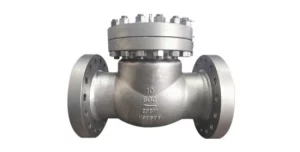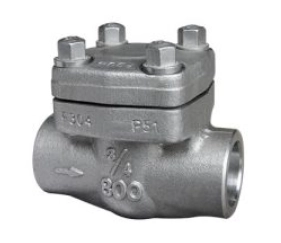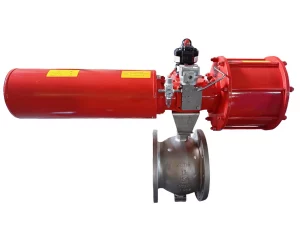Backflow Check Valves: Essential for Contamination Prevention
The Importance of Backflow Check Valves in Water Supply Systems
Preventing Contamination in Water Supplies
Backflow check valves are essential mechanical components to restrict water and dirt from flowing backward into the clean water supply in the water supplying systems. This is essentially a nonreturn valve as it only allows for water to flow in one direction, protecting water from contaminations. These types of backflow prevention valves defend the integrity of potable water systems from pollutants and other hazardous chemicals that may enter the water supply.
The Role of Backflow Check Valves in Ensuring Safe Drinking Water
Backflow check valves are used primarily to protect drinking water from backflow contamination. This is done automatically by closing when lower pressure is present in the pipes that contain the water downstream or prevents reverse flow from exiting the pipes. This is a very important mechanism when it comes to drinking water supply because in cities it is possible to mix it with non-potable water sources. These valves make sure drinking water does not get polluted and contaminated.
How Backflow Check Valves Operate to Maintain Water Quality
The operation of a backflow check valve relies on the difference of pressures in fluid mediums. They are normally closed and open when the fluid runs through with a lot of force from upstream. Should downstream pressure exceed upstream pressure, the valve will close automatically and allow for no backflow. This system operates automatically and is crucial to the standard of the water because it prevents contaminated fluids from entering the potable water supply.
Types and Mechanisms of Backflow Check Valves
Various Designs of Backflow Check Valves
|
Type |
Description |
|
Swing Check Valves |
Utilize a swinging disc to allow or block flow; effective for low-pressure systems but susceptible to water hammering. |
|
Dual Plate Check Valves |
Feature two spring-loaded plates that open with forward flow and close against backflow; compact design reduces slamming. |
|
Lift Check Valves |
Similar to the structure of globe valves, with the disc moving up and down the center line of the channel. Fluid resistance is larger, suitable for smaller pipe size occasions. |
Mechanisms Behind Effective Contamination Prevention
Backflow check valves are designed to prevent contamination and it is this very design that ensures their effectiveness. Swing check valves, as the name implies, use a disc that swings (on a hinge or trunnion) to block the path of media in the event of backflow, and they are one low-tech approach to preventing backflow under the right circumstances. This design is improved by having dual plates, which both close more quickly and also minimize the slamming effects that can physically damage the valve over time. Their performance is stronger when locating the check valve because the spring also covers shut, so when it has affliction changes, the change-action notice is quicker.
Installation and Maintenance Best Practices for Backflow Check Valves
Key Considerations for Proper Installation
Site Assessment and Valve Selection
A comprehensive site inspection on site should be carried out from the start to identify the system specifications and choose the right type of valve for proper installation. Choose size and design based on system pressure, flow rate, medium, etc., and any factors that could contaminate the components (contamination includes viral particles, bacteria, etc.), which means choosing between a swing (also known as hinged) or dual plate or lift design.
Compliance with Local Regulations and Standards
Installation must comply with local regulations and standards governing backflow prevention devices. Ensuring compliance not only guarantees optimal performance but also avoids legal issues related to non-compliance.
Routine Maintenance Procedures to Ensure Optimal Performance
Backflow checking valves have a long life if they are properly maintained with routine maintenance. Valve condition should be assessed as part of regular inspections, looking for signs of wear or damage. Keep your parts clean and replace worn parts when necessary in order for the whole operation to run smoothly. This also helps maintain proper function even after extended use by ensuring they will perform better when needed, providing a firmer assurance that they will provide effective protection from contamination threats in water supply systems.
Challenges and Solutions in Implementing Backflow Prevention Systems
Common Issues Faced in Water Supply Systems
Pressure Fluctuations and Their Impact on Valve Functionality
There is a clear impact of pressure fluctuations in the water supply systems to result in the opening and closing of the backflow check valve and can cause the nonfunctioning of the backflow check valve. These variations can trigger faulty opening and closing of valves that may result in contamination risk. A backflow check valve may not respond quickly enough to close if the downstream pressure suddenly exceeds the upstream pressure because of an abrupt demand change or pump failure, causing contamination of the clean water supply.
Wear and Tear Over Time Leading to Potential Failures
The backflow check valve is not free from wear and tear in time within the floating mechanics that it adopts, and the failure of the check valve can lead to potential disasters. Mechanical elements — discs, springs, or hinges — are subject to degradation due to prolonged operation across changing pressures and flow rates. This degradation may lead to leaks or total valve failure, which can prevent the system from properly preventing contamination. To reduce these risks and ensure long valve life, regular maintenance and prompt replacement of worn parts are highly recommended.
Innovative Solutions for Enhanced Reliability
So, there are some innovative solutions designed to improve backflow prevention effectiveness. Which contains high-quality materials resisting corrosion and wear, and employing advanced valve designs to mitigate water hammering and slamming. Nonslam axial check valves have significantly reduced abrupt closure impacts, resulting in a smoother operational mechanism and a longer life span for valve components, and this would be a prime example. In addition, smart monitoring systems can also be integrated with valves to give real-time information on valve health and functionality for planned preventive maintenance.
Miwival’s Contribution to Water Safety with Advanced Products
Overview of Miwival’s Cutting-Edge Technology in Backflow Prevention
Miwival backflow check valves are an advanced product that brings modern-day materials and mechanisms which means a very fast responding valve and effective contamination protection. Miwival products provide effective solutions for maintaining a clean water supply, addressing common problems such as pressure fluctuation and wear over time.
Exploring Miwival’s Other Products: V Port Segmented Ball Valve
Miwival has listed numerous other products apart from backflow prevention devices to support fluid control in different applications. An example of this is the V Port Segmented Ball Valve. Using a V-shaped port design, this kind of valve offers proper flow control, making it suitable for regulating pressures at predetermined flow rates. The V Port Segmented Ball Valve is designed from rugged construction materials that can handle harsh operating conditions and be maintenance-free.








